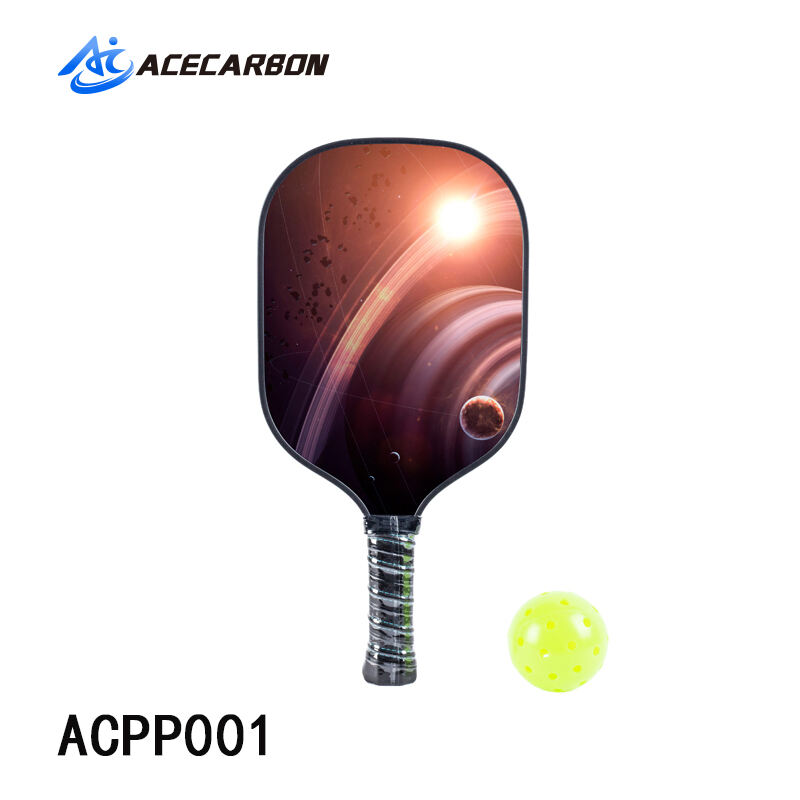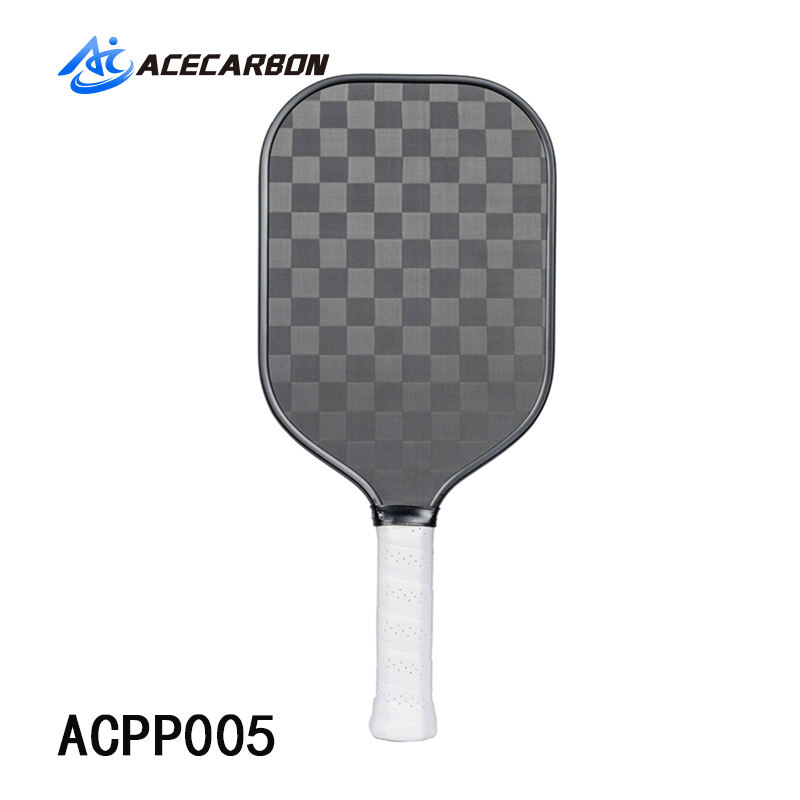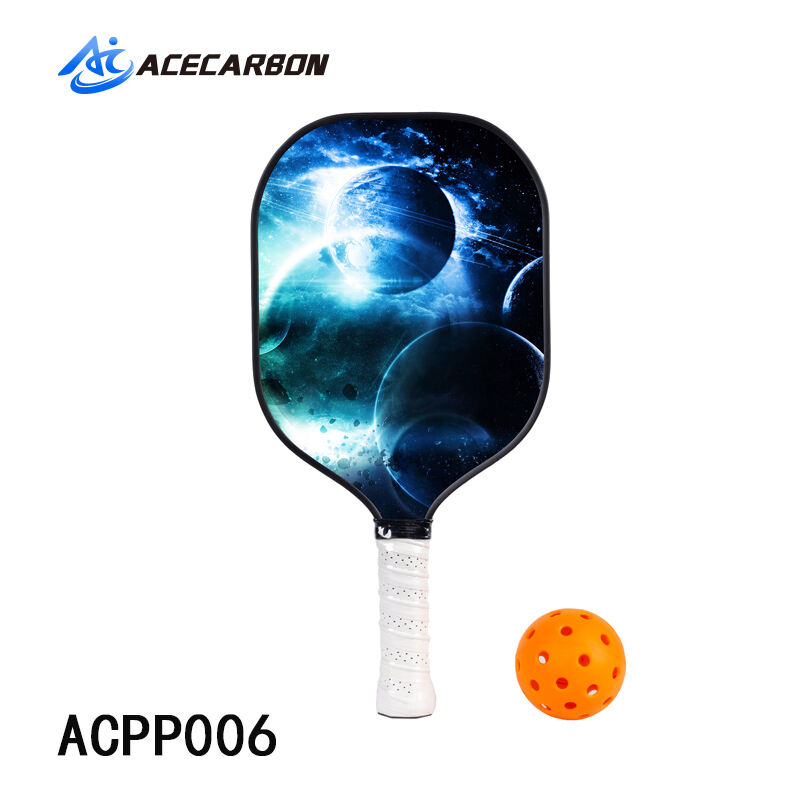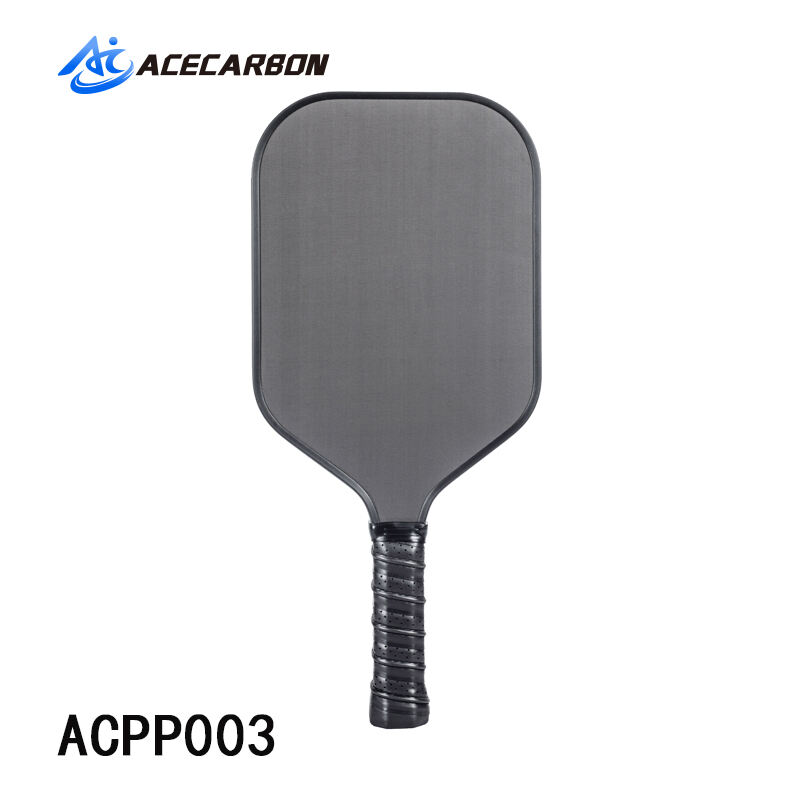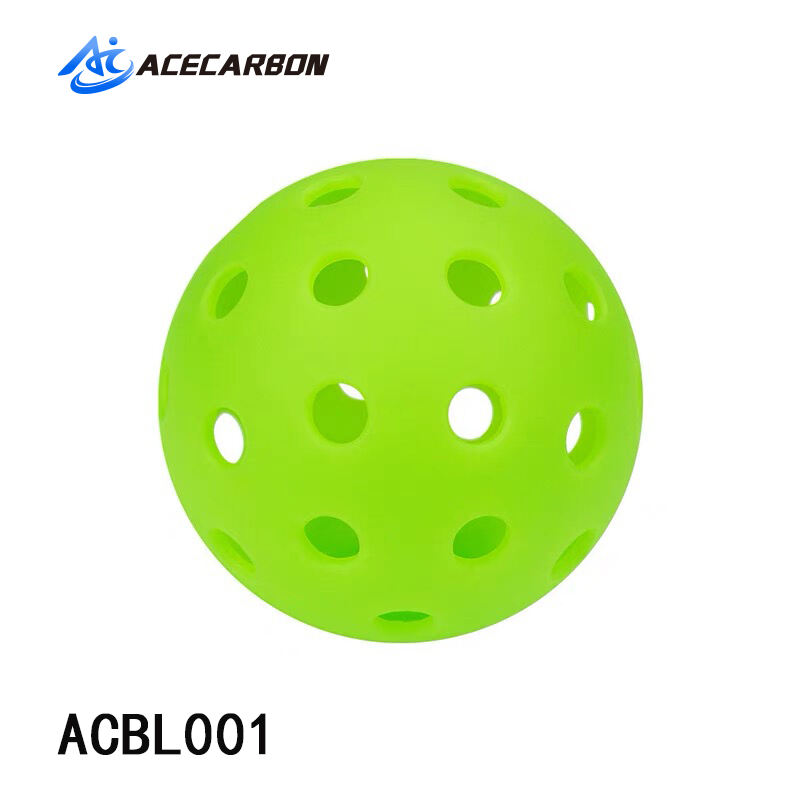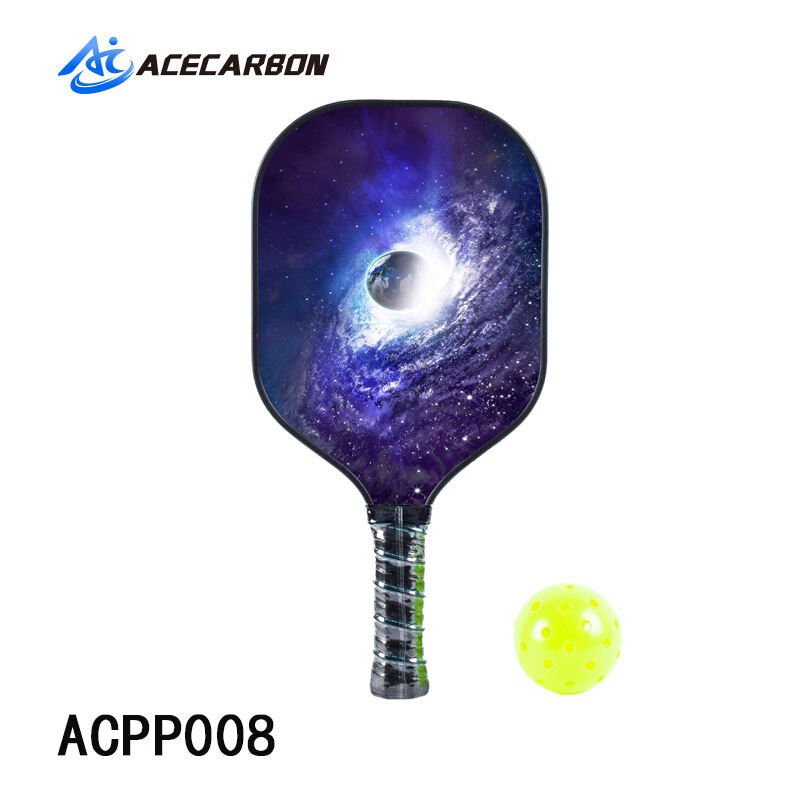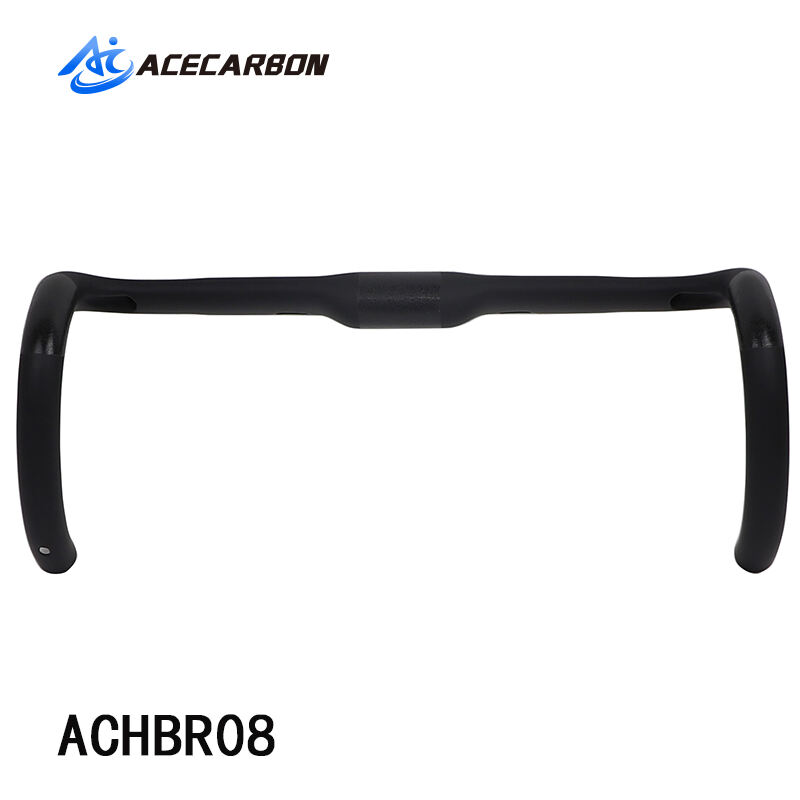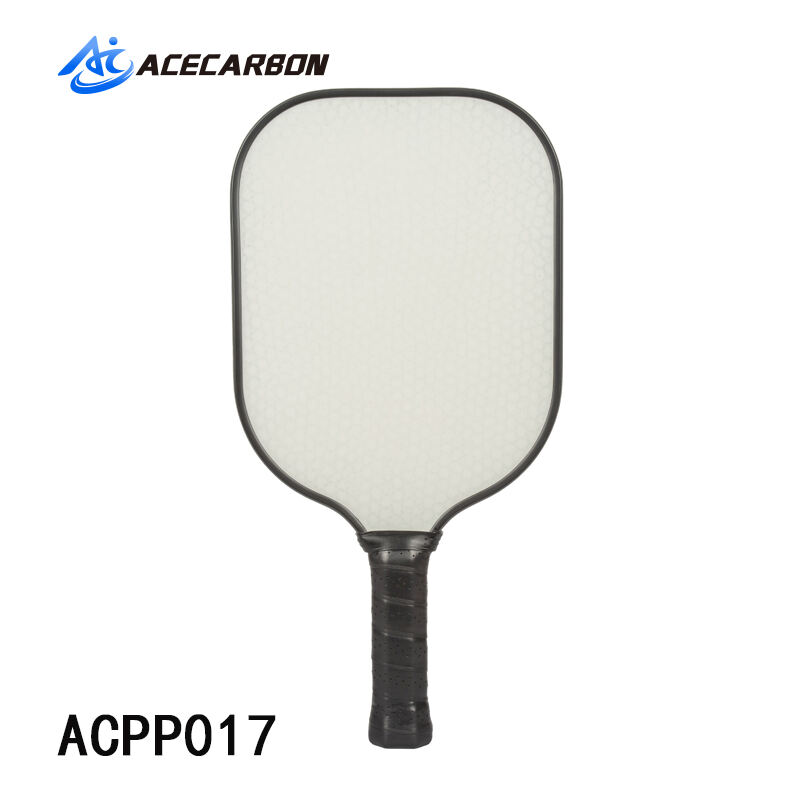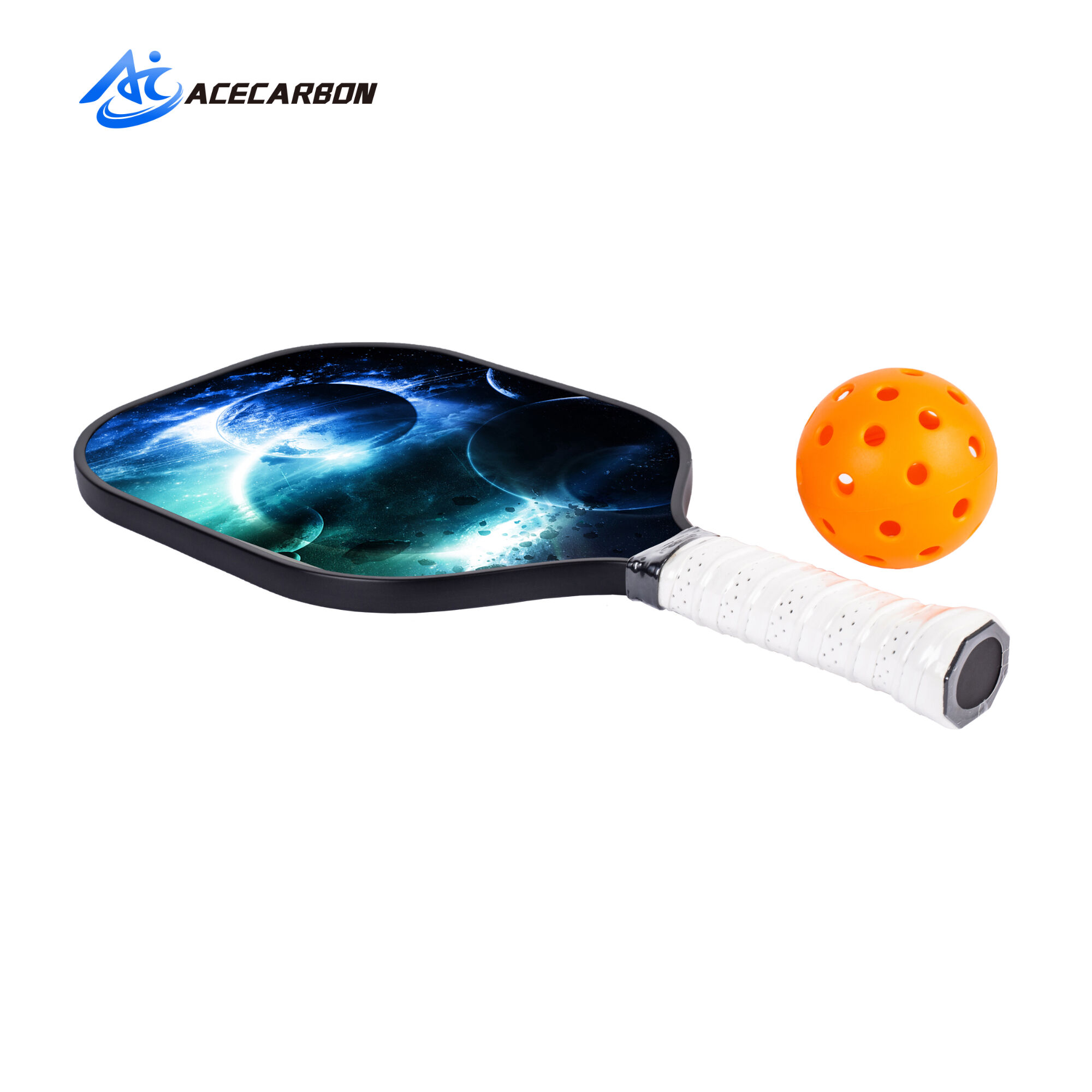Comparing Pickleball Paddles and Tennis Rackets: Key Differences and Similarities
Pickleball Paddles vs. Tennis Rackets: Key Differences
The design differences between pickleball paddles and tennis rackets really stand out when looking at how each sport plays out on the court. Pickleball paddles tend to be made from solid materials like wood or composite blends, featuring flat surfaces that remind many players of those big table tennis paddles. When hitting the ball, these paddles don't actually compress much during contact. Tennis rackets tell a different story altogether though. They have those wider frames with strings stretched across them, creating all sorts of spin possibilities that just aren't there in pickleball. These fundamental construction differences mean players develop completely different swing techniques and approaches to controlling where the ball goes after impact.
What's built into pickleball paddles versus tennis rackets makes them quite different in feel and performance. Most pickleball paddles come in composites like fiberglass or even solid wood cores wrapped in polymer faces, keeping things light enough for quick swings. Tennis equipment tells a different story though. The frames tend to be constructed from either aluminum alloys or carbon fiber graphite, materials that add heft but also last much longer through thousands of hits against balls traveling at high speeds. This difference matters when actually playing the games. A lighter paddle allows for faster reactions during pickleball rallies while the heavier tennis racket gives players better power behind their shots despite requiring more strength to maneuver effectively across the court surface.
When people actually get out on the court, the difference between pickleball paddles and regular tennis rackets starts to show. Pickleball paddles give better control because they're made from solid materials that don't bend much, though they don't really pack much punch behind shots. That's why most pickleball games focus so much on where exactly the ball lands instead of how hard it hits. Regular tennis rackets tell a different story altogether. These bad boys let players hit balls with way more power and spin. How tight those strings are matters a lot too since it changes how fast the ball goes and where it ends up going after contact. With both good string tension and a flexible frame, tennis players can really twist and turn the ball around the court, which is pretty much what makes tennis such a fast moving sport compared to pickleball.
Court Size and Layout: How They Affect Gameplay
Understanding the differences in court dimensions between pickleball and tennis is essential, as they significantly influence gameplay dynamics, player movement, and strategy.
Pickleball Court Dimensions
Standard pickleball courts measure around 20 feet wide by 44 feet long, which makes them way smaller than regular tennis courts. Because of this compact space, players end up standing closer together during matches, requiring fast reactions and sharp movement skills. The net is also set lower than what we see in tennis games, sitting at 34 inches tall right in the middle and rising just a bit to 36 inches along the sides. These measurements really change how the game plays out. For instance, serves need to be placed differently since there's less room between the baseline and the net. Players often develop unique shot strategies because they have to work within these tighter boundaries, creating an entirely different feel compared to other racket sports.
Tennis Court Dimensions
A standard doubles tennis court measures 36 feet across and stretches out to 78 feet long, giving players plenty of room to move around. The bigger space really tests how much energy players have and how quick they can get from one side to another during matches. At the middle point, the net sits exactly 3 feet high, making serves and volleys trickier than they might seem at first glance. All these measurements change how the game plays out completely compared to something like pickleball. Tennis becomes more about planning moves ahead and positioning yourself right on the court, while pickleball keeps things tighter and faster paced overall.
Impact on Movement and Strategy
Pickleball and tennis courts are different sizes, which changes how players think about their games completely. On pickleball courts, everything happens so fast because the area is much smaller. Players need lightning quick reflexes and lots of footwork since they're constantly moving back and forth across this compact space. We see a lot of short shots near the net, those little dink shots that float over just above the net, forcing opponents into awkward positions. Tennis tells a different story though. The bigger court means players have to cover more ground, so stamina becomes really important. Good tennis strategy usually mixes hitting from behind the baseline with occasional charges forward at the net. Powerful serves and strong groundstrokes help control most points on these larger courts. When someone steps onto either court, they immediately face totally different physical demands and mental challenges based purely on those dimension differences.
Equipment Breakdown: Pickleball Paddles and Tennis Rackets
Pickleball Paddle ACPP001 Carbon Fiber Racket
The ACPP001 Carbon Fiber Racket gives players better control and easier handling no matter what skill level they're at. Made from light weight carbon fiber material, this racket lets athletes swing and position the paddle faster, something really important when reacting quickly during matches or placing those tricky shots just right. What makes this racket stand out though is how its firm surface cuts down on vibrations after hitting the ball. Players get that steady feeling in their hands, making accurate shot placement much easier than with other rackets on the market today. Want to see if this could be the perfect upgrade? Look up reviews and specs for the ACPP001 model online.
ACPP005-18K Version Pickleball Paddle
The ACPP005-18K pickleball paddle features a composite core that soaks up shock, which means less strain on players' arms after long games on the court. What makes this paddle stand out is its textured surface. This isn't just good for holding onto the paddle better when hands get sweaty, it actually helps create more spin on shots too. Serious players who want to take their game to another level will find this paddle particularly useful for advanced techniques and competitive play. Those interested should check out what makes the ACPP005-18K special for themselves.
ACPP006 Durable and Lightweight Pickleball Paddle
The ACPP006 paddle strikes just the right mix of tough enough to last but light enough not to weigh down your arm, so it works great for folks who are just starting out or play recreationally most weekends. What makes this model stand out? The handle fits comfortably in the hand during those long afternoons on the court, something many newer players appreciate when their arms start to tire from all that swinging. Players report feeling less exhausted after games without sacrificing control over their shots or power behind them either. Those interested should check out what makes the ACPP006 special compared to other paddles on the market these days.
Serving Techniques: Underhand vs. Overhand
Serving technique makes all the difference in racket sports games, often determining how a match will unfold from start to finish. Pickleball stands out because most players serve underhand, something that really helps newcomers get into the game. The underhand motion doesn't need as much wrist action or arm strength compared to other sports, so it's much simpler for someone just starting out. New players can concentrate on learning basic strokes and court positioning instead of struggling against powerful serves they can barely return. Many people find this gentler learning curve builds their confidence faster, which naturally leads to more fun on the court overall.
Tennis relies heavily on overhand serves that need both accuracy and muscle behind them. These kinds of serves give players a strong opening shot in the match, often letting them take control right from the beginning. Learning how to do this properly takes time on court though. Getting the timing right matters a lot, along with having enough strength in those arm muscles. Many players find the overhand serve tricky but also really satisfying when it works out. Some even say watching someone nail a perfect serve makes the whole game more thrilling to watch.
The way players serve in pickleball versus tennis makes a big difference in how each game unfolds. Pickleball's underhand serve tends to be softer, which creates a slower, more tactical game where positioning matters more than raw power. Players spend time setting things up for their next shot instead of trying to blast the ball past opponents. Tennis tells a different story altogether. The overhand serve packs a punch right from the start, creating a faster game where players look to capitalize on mistakes as soon as possible. For anyone switching between these sports, getting used to these contrasts isn't just helpful it's practically necessary when planning both attack moves and defense strategies during actual matches.
Pickleball and Tennis: Accessibility and Learning Curve
What makes pickleball so popular? Well, for starters, the game is really simple to pick up thanks to its small court size. People of all ages find it easy to get into because they don't need to master complicated techniques before having fun. Most folks can grab a paddle and start playing within minutes without spending weeks on training sessions first. Another great thing about pickleball is how gentle it is on the body compared to other racquet sports. The court isn't huge, and those specially shaped paddles make hitting the ball back and forth much easier than traditional tennis equipment. This combination has led to a surge in interest lately, particularly from folks who might otherwise avoid sports altogether due to fear of injury or intimidation factors.
Tennis takes real work to get good at because of all the different strokes and strategies involved. Anyone starting out faces quite a learning curve when they have to figure out forehands, backhands, volleys, serves plus proper footwork across the court. The game definitely pays off for those willing to put in hours on the court, though most folks don't hit their stride until after months if not years of regular play. That's why many serious players stick with it year after year - there's something satisfying about seeing gradual improvement through consistent effort and dedication to getting better at something complex.
Pickleball tends to be the go-to choice for folks looking to feel accomplished quickly while also meeting new people, all without spending months mastering techniques. People from beginners to seasoned athletes can jump right in and have fun together on the court. Tennis tells a different story though. Most serious players gravitate toward it because they want something that really works their body and mind at the same time. The fast-paced rallies and tactical thinking required make it perfect for those who get excited about pushing themselves physically. At the end of the day, whether someone prefers the shorter games and laid back vibe of pickleball or the longer matches and intense competition of tennis comes down to what kind of workout and social experience they're actually looking for in their spare time.
FAQ
What are the main differences between pickleball paddles and tennis rackets?
Pickleball paddles are solid and typically made from composite materials or wood, while tennis rackets have a stringed frame and are usually constructed from aluminum or graphite. These differences affect control, power, and gameplay techniques.
How do court sizes for pickleball and tennis differ?
A pickleball court measures 20 feet in width and 44 feet in length, much smaller than a doubles tennis court at 36 feet wide and 78 feet long. These sizes impact players' movement, strategy, and game pace.
Why do pickleball and tennis serve techniques differ?
Pickleball uses underhand serves for ease and accessibility, while tennis requires overhand serves for power and strategic advantage. These techniques shape the gameplay style in each sport.
Which sport is easier for beginners, pickleball, or tennis?
Pickleball is generally easier for beginners due to its simpler motions and smaller court size, making it accessible for players of various ages and physical capabilities. Tennis has a steeper learning curve and demands more practice to master.

 EN
EN
 AR
AR
 BG
BG
 HR
HR
 CS
CS
 DA
DA
 NL
NL
 FI
FI
 FR
FR
 DE
DE
 EL
EL
 HI
HI
 IT
IT
 JA
JA
 KO
KO
 NO
NO
 PL
PL
 PT
PT
 RU
RU
 ES
ES
 SV
SV
 TL
TL
 ID
ID
 SR
SR
 SK
SK
 SL
SL
 UK
UK
 VI
VI
 HU
HU
 TH
TH
 TR
TR
 FA
FA
 MS
MS
 IS
IS
 AZ
AZ
 BN
BN
 LO
LO
 MI
MI
 MY
MY
 SM
SM
